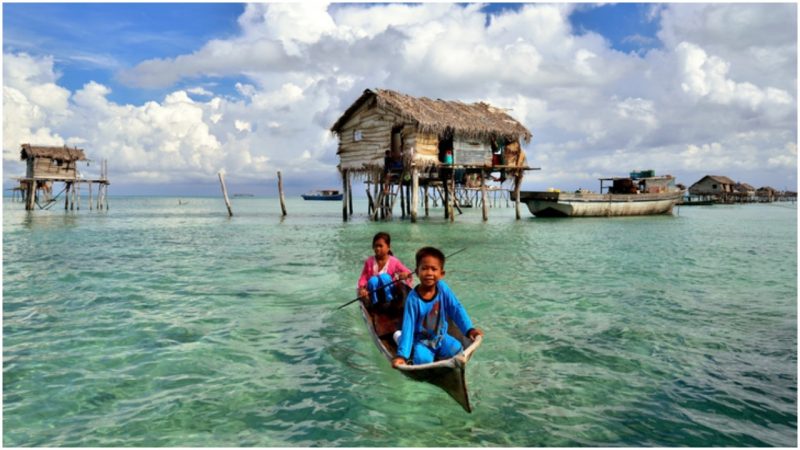The Bajau are a group of people originating from the Philippines and now living in the waters off the coasts of Malaysia. Because of their old status as outsiders, they were forbidden from living on Malaysian soil.
As they were a fishing culture, they carved out a new home for themselves — in the sea. They’ve been living this way for centuries, and there are currently about a million of them, according to some estimates.
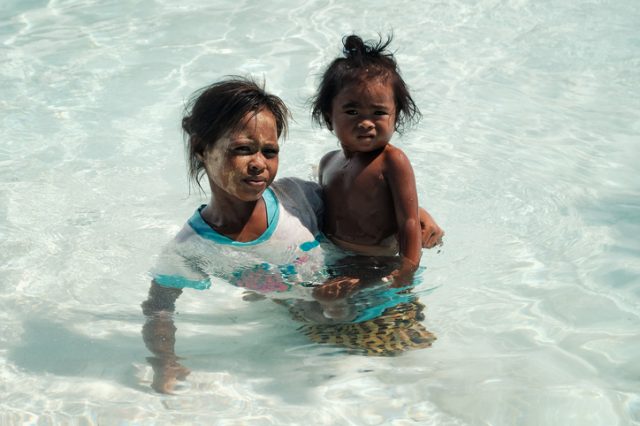
They live in wooden huts built on stilts in the waters off the coast of Malaysia. They spend their days in handmade boats, according to Australian news.com, some just hollowed out logs called pirogues. Even children as young as four quickly learn to become adept at catching fish, octopus, and lobster with nets and spears.
The Bajau spend their days sailing and fishing around the coast, then take their catch to the village of Semporna to trade for other foodstuffs and necessities, returning home as the sun goes down.
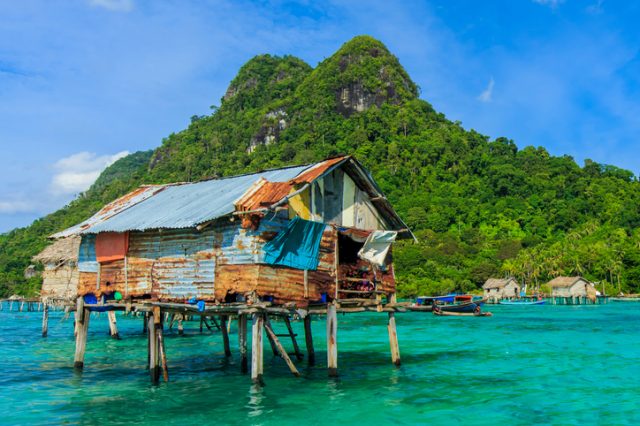
Photographer Ng Choo Kia spent some time with the Bajau on their pirogues, and the pictures he took of their daily life have garnered a lot of public attention.
He said, “When most people see these photographs they are attracted by the unique scene and the lifestyle these people are living.”
His pictures are stunning, with the village of huts out in the incredibly blue water and the Bajau swimming or catching fish. There’s another side to their existence, however.
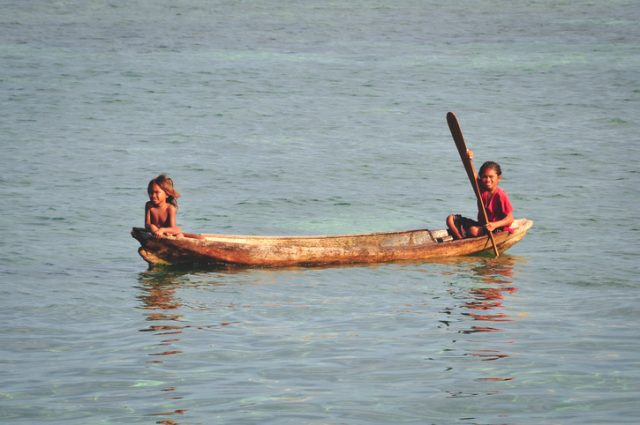
According to peoplesoftheworld.org, the Bajau live in some of the most dangerous waters in the world, with many occurrences of open piracy, and minimal policing at best. They are completely unarmed and they rely on running away from potential threats.
They are fairly isolated from the rest of the world. Their children can’t go to school, both because of how little time is spent on land and because all hands are needed to help with the fishing. Their opportunities for finding another sort of life are, therefore, severely limited.
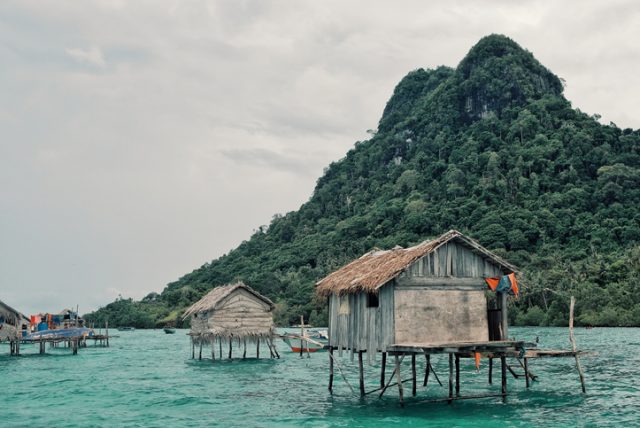
Having said that, the Bajau are remarkably well adapted for the way they live. Paul Rincon, writing for the BBC, noted that these sea nomads, due to their extensive undersea diving, have developed larger spleens than related peoples who live on land. Among the types of seafood the people gather and sell are shellfish that are found on the ocean floor. Their larger spleens mean that they get more oxygen in their blood, to help when they are diving.
The spleen is a small organ near the stomach which removes old cells from the blood, acting like an oxygen reserve on longer dives. When they dive the traditional way, divers may be at it for eight hours a day, with more than half that time actually being spent underwater.
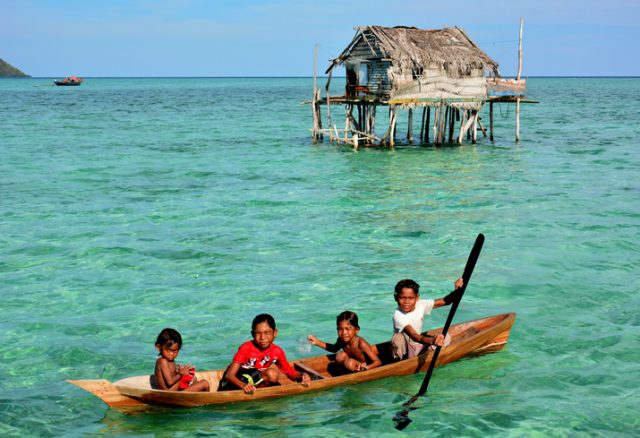
Dives can vary in length from 30 seconds to several minutes and may go as deep as 230 feet. When the divers are working, all they have in the way of equipment is a weight belt, goggles, and a wooden mask.
In addition to having a way of life that hasn’t changed in centuries, the Bajau people have also given scientists a way to study how genetic adaptation is affected by our environment. Dr. Melissa Ilardo from the University of Copenhagen says that the spleen was the logical candidate for studying how the divers can do what they do.
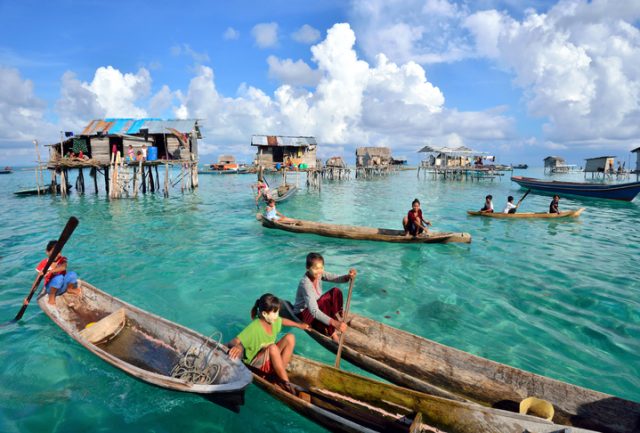
“There’s a human dive response that’s triggered by holding our breath and submerging yourself in water. You can trigger it by submerging your face in cold water,” she said.
The response causes your heart to slow, and the blood vessels in your arms and legs constrict, preserving the oxygen in your blood for your vital organs, and your spleen constricts, too. The spleen holds oxygenated red blood cells, and when it constricts, it gives you an oxygen boost, sort of like a scuba tank.
Dr. Ilardo studied the spleens of a number of Bajau, some who were divers and some who weren’t, and all of them had spleens of similar size. That proves that the increase in size isn’t just a result of their own diving experience, but an adaptation among the entire population.
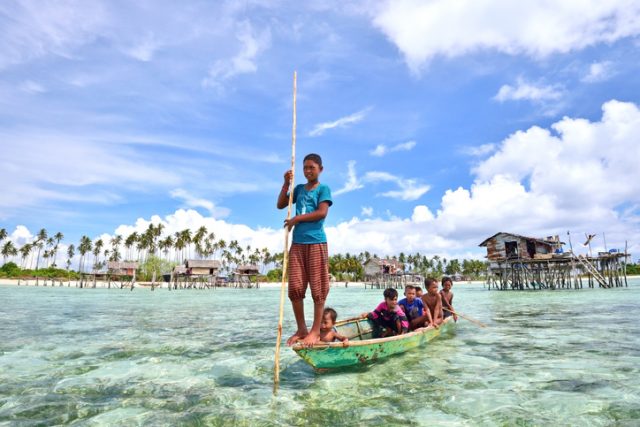
When the spleen size of the Bajau were compared to the population of a nearby farming community, their spleens were about 50 percent larger than those of the land-based population.
Genetic studies of the Bajau also indicated 25 places their genomes were different from other groups; at least one of those differences was related to spleen size, which shows that the Bajau have genetically adapted to their life on the water and to sustaining long dives.
https://www.youtube.com/watch?v=YDspP4BhlTw
Another possible change, according to the Daily Mail, is that Bajau children are reported to have adapted to see better underwater, and they may get “land sickness” when visiting the mainland.
It is rare to be able to study evolutionary changes in existing species. The Bajau people offer not only the chance to study changes; scientists can learn more about the development of our species.
